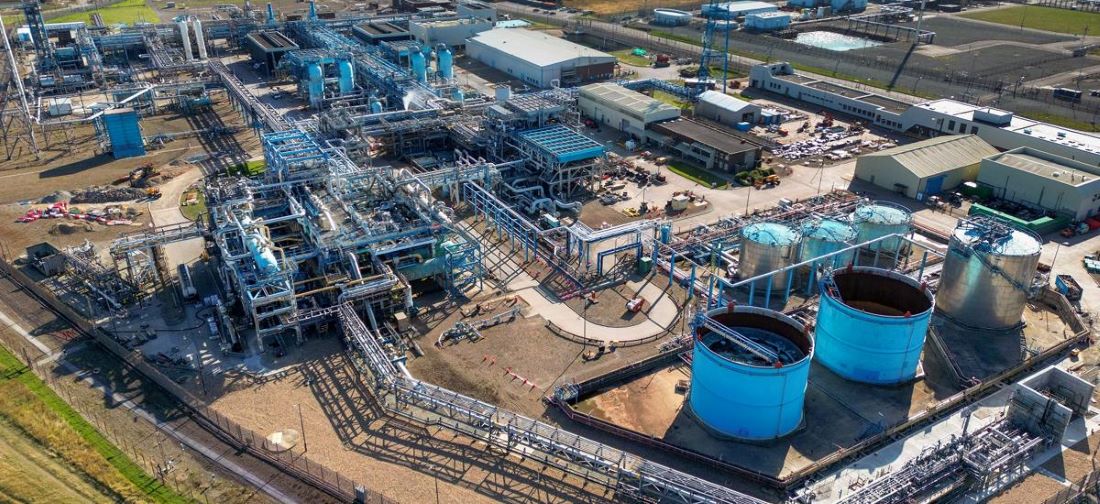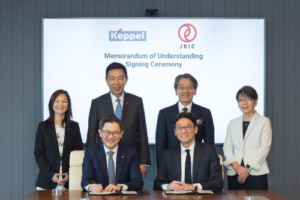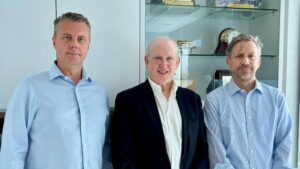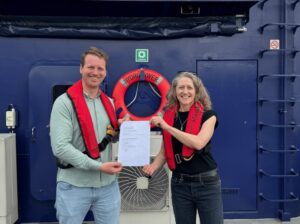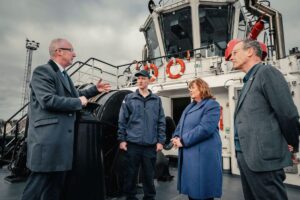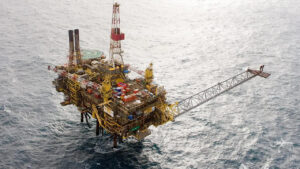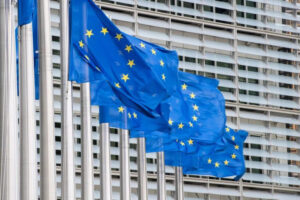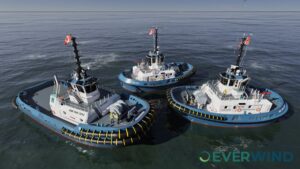In focus: ‘Maximum energy with minimum emissions’ to bring us safely to net-zero goals
With increasing concerns about energy security, questions are arising about whether energy transition to clean and renewable sources can provide solid near-future solutions. According to the energy industry, it is not a matter of either-or, but rather and-and, since we currently need all the energy we can get.
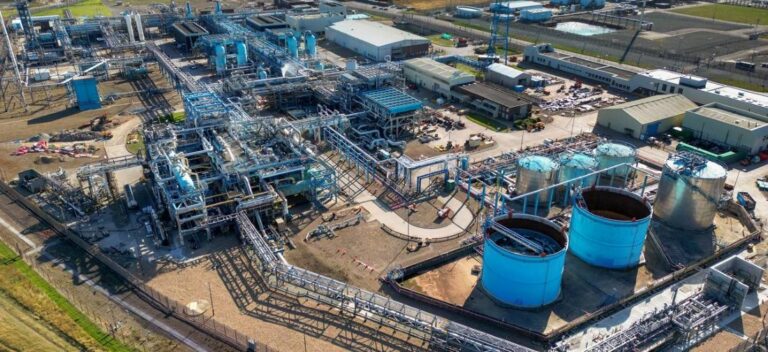
In a few days, the world will gather in Egypt at the 2022 United Nations Climate Change Conference, commonly referred to COP27, which is taking place against the backdrop of multiple and interacting crises such as inflation, debt, Russia’s invasion on Ukraine, and a looming recession.
Given the energy supply and security concerns, the need to tap into all the energy sources currently on disposal while keeping an eye on the 2050 target will likely be one of the themes.
This was also highlighted during the Abu Dhabi International Petroleum Exhibition Conference (ADIPEC), held under the patronage of the UAE’s president, where Abu Dhabi National Oil Company’s (ADNOC) CEO, Managing Director and Minister of Industry and Advanced Technology, Dr Sultan Ahmed Al Jaber, underscored the need for “maximum energy with minimum emissions” to ensure global energy security.
Energy should be the top priority of everybody, especially now that the global energy landscape is facing various difficulties and uncertainties.
As time passes, the dependency on energy will only increase. That is why the world needs all the solutions it can get.
“It is not oil and gas, or solar, not wind or nuclear, or hydrogen. It is oil and gas and solar, and wind and nuclear, and hydrogen. It is all of the above, plus the clean energies yet to be discovered, commercialized and deployed,” outlined Al Jaber.
Related Article
In terms of energy security, the European Commission (EC) has made another move to support new and clean solutions under its REPowerEU plan. Namely, the EC today launched the third call for large-scale clean technology projects with a budget of €3 billion to boost the deployment of industrial solutions to decarbonise Europe.
The call was opened under the EU Innovation Fund, a funding programme for the demonstration and commercialisation of innovative low-carbon technologies.
Related Article
With this call, EC focuses on the priorities of the REPowerEU plan and aims to provide additional support towards ending the EU’s dependence on Russian fossil fuels and fast-forwarding the green transition.
Europe and the U.S. shifting their attention to hydrogen
In the offshore wind arena, a new plan to incorporate green hydrogen production with floating wind farms emerged in Italy.
A company established by an investment management subsidiary of the UK-based Nexta Capital Partners, submitted an application for a floating wind farm in the southern Adriatic Sea.
The wind farm is planned to have a total capacity of 2,205 MW and is expected to produce up to 5 TWh of clean electricity per year, with part of this outlined to be fed into the grid and part to be used for green hydrogen production.
Related Article
-
More green hydrogen plans emerge in Italy with 3.6 GW of floating wind proposed offshore Barletta
Business Developments & Projects
New hydrogen projects are being introduced in the UK, too. One of the latest comes as Equinor and Centrica signed a cooperation agreement to explore the development of a low-carbon hydrogen production hub at Easington in East Yorkshire.
Under the agreement, the Centrica-operated area at Easington could transition to a low-carbon hydrogen production hub over the coming decade.
This would support Humber’s decarbonisation ambitions and help the UK meet its net zero goals and hydrogen production targets.
Currently up to one third of the UK’s total gas supply enters via Easington, much of it from Equinor’s Norwegian facilities. Easington is also situated close to some of the world’s largest offshore wind farm developments, offering huge potential for both blue and green hydrogen production.
Related Article
-
Equinor and Centrica team up to develop East Yorkshire hydrogen hub
Business Developments & Projects
Across the Atlantic Ocean, in Louisiana, Singapore-based owner and operator Hafnia partnered with Clean Hydrogen Works (CHW) to explore the development of a global-scale clean hydrogen-ammonia production and export project, Ascension Clean Energy (ACE), in Ascension Parish.
Within the scope of the project, additional technologies are being explored which could result in zero-carbon or even carbon-negative hydrogen-ammonia production at the facility.
This project, which could drive up to $7.5 billion in investments, aims to capture up to 98% of CO2 emissions from its processes and will provide a cost-effective, scalable pathway to supply carbon-free energy, the developers said.
Related Article
-
Louisiana to host $7.5 billion clean hydrogen-ammonia production and export project
Business Developments & Projects
Anticipated production is currently targeted by late 2027 with the shipment of the clean energy commencing in 2028.
Shipping industry continues its focus on zero-emission fuels.
In times like these, when energy security and decarbonisation are becoming more and more important, the shipping industry has to try to find another way to reach its zero-emission fuel goal.
According to a recently submitted paper by several member states and the International Windship Association (IWSA), wind propulsion technology should play a bigger role in decarbonising shipping.
The paper outlined that the potential of wind power technology has been underrated in the reduction of greenhouse gas emissions from ships.
Some of the key benefits of wind propulsion technology include the fact that as a direct propulsive energy source it can be used as a partial or main propulsion system.
Related Article
The shipping sector is, and will be, one of the biggest consumers of clean fuels and the industry continues to roll out new projects that will secure the production and supply of green fuels for vessels.
This week, Danish shipping and logistics giant A.P. Moller – Maersk signed a general protocol for collaboration with the Spanish government to explore the opportunities for large-scale green fuels production in Spain.
If the collaboration gets fully implemented, the partnership could deliver up to 2 million tonnes of green fuels per year.
Related Article
-
Maersk exploring large-scale green fuels production in Spain
Business Developments & Projects
For this project, Maersk and the Spanish government are reviewing production opportunities in the Andalusia and Galicia regions.
The 19 vessels capable of running on green methanol that Maersk will put in operation during 2023-2025 will require approximately 750.000 tonnes of green methanol.
Vessel decarbonisation is also in the focus of funding innovation, with Norway’s cleantech company TECO 2030, together with other partners receiving an invitation for HORIZON EUROPE funding of €5 million to realize the hydrogen-powered tanker concept HyEkoTank.
Under the project, the companies plan to retrofit an 18.600 DWT product tanker with a 2.4 MW fuel cell system by TECO 2030 and 4000 kg compressed hydrogen storage for demonstration in 2024.
Related Article
-
New hydrogen tanker retrofit project to get financial boost from EU
Business Developments & Projects
It is expected that the retrofit tanker concept will demonstrate zero emission at berth and 60% reduction of GHG emissions during the voyage.
Register for Offshore Energy Exhibition & Conference:

